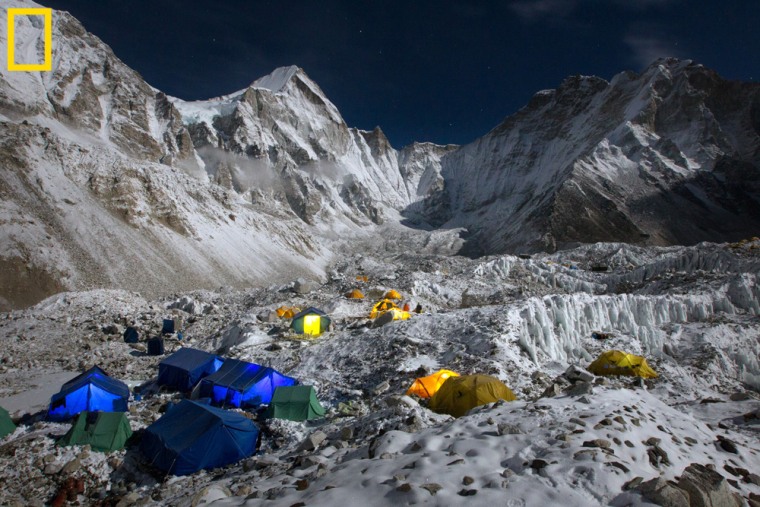A team of explorers is attempting to reach the summit of Mount Everest following in the footsteps of a historic and notoriously dangerous 1963 climb to the top of the highest mountain on Earth.
Thanks to modern technology, readers around the world can follow the climbers' progress on their blog at National Geographic, sponsor of the expedition.
The team of climbers, led by seasoned mountaineer Conrad Anker, is marking the 50th anniversary of the first American trip to the top of Everest. On that 1963 expedition, climbers Willi Unsoeld and Tom Hornbein followed the risky West Ridge route up the peak, in contrast to the now traditional approach from the southeast, known as the South Col.
A second team of climbers is following that South Col route up to the summit. [ Images from both Everest expeditions .]
Both attempts are extremely dangerous. Climbing Mount Everest is a grueling and life-threatening endeavor, no matter the route. The bodies of those who have failed still lie on the mountain where they perished.
One of the most famous attempts to reach Everest's summit claimed the lives of British explorers George Mallory and Andrew Irvine. The men disappeared on June 8, 1924, during their attempt to become the first humans to reach the top of the colossal mountain.
Humans wouldn't conquer Everest until nearly three decades later, when New Zealander Edmund Hillary and Nepali Tenzing Norgay stood atop the unforgiving peak for the first time, in 1953.
Mallory's body was discovered in 1999. Conrad Anker is the man who found it.
Preserved by the cold, dry mountain air, there were still dark contusions and gashes visible in his flesh, indicating he'd probably fallen. He was face down, his arms raised above his head, fingers dug into the surrounding scatter of rocks, as though clinging to the side of the mountain. Irvine has never been found.
National Geographic is documenting this year's ascent from the field with blog updates, photographs and videos that will be available online and in the magazine's iPad publication. The climb will be featured in a story to be published in the magazine next year.
The climbers arrived at Base Camp on April 16, accompanied by a team of doctors from the Mayo Clinic who are studying the effects of the extreme altitude on the human body.
Even at Base Camp, conditions are tough. Temperatures this week have hovered around 20 degrees Fahrenheit (minus 6 degrees Celsius).
Follow OurAmazingPlanet for the latest in Earth science and exploration news on Twitter @OAPlanet and on Facebook.
